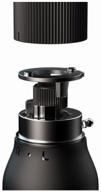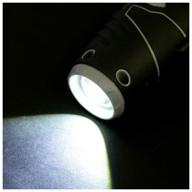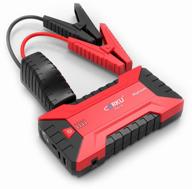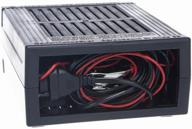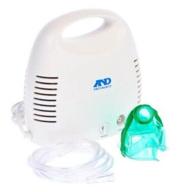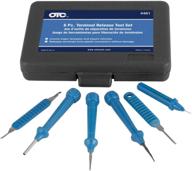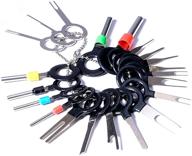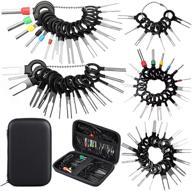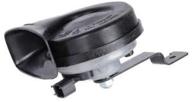Another interesting products
Troubleshooting Electrical Problems Under the Hood
Electrical issues can be some of the most frustrating and challenging problems for DIY mechanics. Unlike mechanical systems, electrical faults often require testing components and tracing wiring to isolate the root cause. Having the right tools on hand can make diagnosing electrical gremlins much easier.
Essential Electrical System Tools
Here are some must-have tools for troubleshooting electrical issues:
- Multimeter - Tests voltage, resistance, and continuity
- Test light - Illuminates when circuit is live
- Jumper wires - Temporary connections for testing
- Wiring diagrams - Map of electrical circuits and components
Finding Shorts and Bad Connections
Two of the most common electrical issues are shorts and bad connections. Here is how to track them down:
Shorts
- Check fuses - Blown fuses indicate a short
- Isolate the shorted circuit with a test light
- Inspect wiring for bare copper or damage
- Wiggle harness while monitoring voltage
Bad Connections
- Inspect connectors for contamination or corrosion
- Check terminals for looseness or heat damage
- Use jumper wires to bypass connectors
- Clean contacts thoroughly and reconnect
Specialty Electrical Tools
For advanced electrical diagnosis, consider these specialty tools:
| Tool | Purpose |
|---|---|
| Circuit tester | Quickly checks voltage at different points |
| Terminal removal tool | Disengages stubborn connector terminals |
| Crimping tool | Repairs wires and terminals |
| Soldering iron | Makes permanent and weatherproof wire repairs |
With the right preparation and diagnostic approach, you can efficiently track down and fix pesky electrical problems. Developing strong electrical troubleshooting skills will save you time, money and frustration over the long run.
Essential Electrical System Tools for Diagnosing Issues
Having the right tools on hand makes diagnosing and fixing electrical problems much easier. Here are some must-have electrical tools no mechanic's toolbox should be without.
Multimeter
A digital multimeter (DMM) is arguably the most essential tool for working on electrical systems. A quality auto multimeter like the Innova 3340 can:
- Measure voltage, current, resistance
- Check continuity in circuits
- Test diodes, fuses, switches
- Detect shorts, opens, and grounds
For example, you can use a multimeter to check if a fuel pump is getting 12V power. Set to voltage mode, attach the red lead to the positive terminal and black lead to ground. A low reading indicates a wiring issue.
Test Light
A test light is useful for quickly checking if a circuit is live. It's an insulated wire with a probe tip on one end and a light bulb on the other. For example:
- Probe the ground side of a fuel pump connector. The test light illuminating confirms power is present.
- Check for shorts by probing insulation. The light indicating voltage means bare wire is grounding.
Jumper Wires
Jumper wires are short lengths of wire with alligator clips or pointed tips on each end. They allow temporarily connecting or jumping terminals to test circuits. For instance, you can use them to:
- Bypass sections of wiring harness to isolate faults.
- Provide ground and power directly to electrical components.
- Simulate sensor inputs to test operation.
Wiring Diagrams
Accurate wiring diagrams are essential for tracing and diagnosing issues. Factory service manuals provide schematics showing wire routes, connection points, and component locations. While pricey, official manuals like Haynes and Chilton are often worth the investment.
Having basic tools like a DMM, test light, jumpers, and wiring diagrams will allow you to troubleshoot many electrical problems. Advanced tools like oscilloscopes, graphing multimeters, and circuit testers may be necessary for complex issues.
Similar products
Must-Have Multimeters and Test Lights for Finding Shorts and Bad Connections
Multimeters and test lights are two of the most useful tools for diagnosing common electrical issues like shorts and bad connections. Here are the key features to look for in these essential troubleshooting tools.
Multimeter Features
A high quality digital multimeter (DMM) makes electrical diagnosis much easier. Look for these key features:
- Auto-ranging - Automatically selects appropriate measurement scale
- True RMS - Accurate voltage readings for modern systems
- Diode testing - Confirms diode polarity and drops
- Continuity - Beeps for shorts and open circuits
- Min/Max - Catches intermittent faults
The Fluke 87V is an excellent example that includes these functions. The auto-ranging and True RMS allow you to quickly take accurate voltage measurements without needing to change scales or know the signal type.
Using a Multimeter to Find Shorts
You can use a multimeter to isolate shorts by:
- Checking fuses - blown fuses indicate a short
- Measuring voltage drops along a circuit
- Wiggling wiring harnesses while monitoring voltage changes
- Verifying bare copper is not grounding out
Test Light Features
When checking for live circuits, a test light is even faster than a multimeter. Look for these useful test light features:
- Bright LED or incandescent light
- Sharp probe tip
- Sturdy test leads
- Integrated probe storage
The OTC 3688 is an affordable test light with an LED bulb and integrated probe storage in the handle.
Using a Test Light to Find Bad Connections
You can use a test light to find intermittent connections by:
- Wiggling harness connectors while watching for flickering
- Checking for voltage drops across terminals
- Probing for corrosion or contaminants
- Verifying proper terminal crimps
Investing in a high-quality multimeter and test light will make finding shorts and bad connections much faster.
Specialty Tools like Circuit Testers and Terminal Tools
While a multimeter and test light can diagnose many electrical issues, specialty tools provide capabilities that make certain tasks much easier.
Top products in ⚡ Electrical System Tools
Circuit Testers
A circuit tester quickly checks for power at various points along a circuit. Here are some useful types:
- 12V circuit testers - Plug into vehicle outlet to probe fuses, wires, connectors
- Inline circuit testers - Clip in-line on a wire to detect shorts
- Fused circuit testers - Protect against voltage spikes causing tool damage
For example, an inline circuit tester can quickly isolate a short without needing to detach connector pins or splice test wires.
Terminal Removal Tools
Terminal removers make disconnecting stubborn electrical connectors much easier by:
- Depressing connector locking tabs
- Lifting or pinching terminal crimps
- Fitting into tight spaces
Trying to pry out terminals with a screwdriver often damages connectors and wiring. Purpose-made terminal tools like the OTC Terminal Pick provide better leverage and fit.
Crimping Tools
High-quality crimping tools create reliable terminals and splices by:
- Built-in wire strippers
- Precision crimp dies
- Ratcheting mechanism for proper compression
- Return spring for automatic die release
For example, the rigid frames and geared action of tools like the OTC Crimping Pliers ensure uniform crimps that won't pull loose.
Soldering Irons
Soldering makes durable and weatherproof wire repairs possible. Features to look for include:
- Adjustable temperature
- Quick heating
- Ergonomic grip
- Safety stand
TheTabiger Soldering Iron is lightweight, heats up fast, and includes multiple tips.
The right specialty tools improve troubleshooting accuracy and make difficult electrical jobs much smoother.
What Are The Most Common Problems With Electrical Systems In Vehicles??
The electrical system in a vehicle is responsible for powering many of its components, including the radio, power windows, temperature gauges, lights, and more. When something goes wrong with the electrical system, it can cause a variety of issues, including preventing the car from starting or running properly. Here are some of the most common problems with electrical systems in vehicles, according to various sources:
It's important to address electrical problems quickly to ensure the safety and reliability of the vehicle. The cost of fixing electrical problems can vary depending on the issue, the type of car, and where you live. Signs of electrical problems include dimmed headlights, burning smells, and frequent fuse blows. If you're not sure how to diagnose or repair electrical issues, it's best to seek the help of a professional technician.
What Are Some Signs That My Car's Electrical System Is Failing??
The electrical system in a vehicle is responsible for powering many of its components, including the radio, power windows, temperature gauges, lights, and more. When something goes wrong with the electrical system, it can cause a variety of issues, including preventing the car from starting or running properly. Here are some signs that your car's electrical system is failing, according to various sources:
If you notice any of these signs, it's important to address electrical problems quickly to ensure the safety and reliability of the vehicle. Signs of electrical problems include dimmed headlights, burning smells, and frequent fuse blows. If you're not sure how to diagnose or repair electrical issues, it's best to seek the help of a professional technician.
What Should I Do If My Car's Electrical System Is Failing??
If you suspect that your car's electrical system is failing, here are some steps you can take:
- Check the battery: A dead battery is one of the most common causes of electrical problems in cars. Check the battery terminals for corrosion and make sure the connections are tight. If the battery is old or not holding a charge, it may need to be replaced.
- Get a diagnostic check: If you're not sure what's causing the electrical problems, take your car to a professional technician for a diagnostic check. They can use specialized equipment to identify the issue and recommend the best course of action.
- Address dimming or flickering lights: Dimming or flickering headlights and other lights can be a sign of charging malfunctions and low system voltage. The culprit could be a dying battery, loose wires, or a malfunctioning alternator belt. If you notice these issues, it's best to get them checked out by a professional.
- Look for hot or burning odors: If you smell burning plastic or other signs of melting or heat, it could be a sign of an electrical problem. This could be caused by a short circuit or other issue that needs to be addressed immediately.
- Check for slow or underperforming electrical systems: If your car's electrical systems, such as power windows or entertainment system, are slow or not working properly, it could be a sign of an electrical problem. This could be caused by a bad alternator or other issue.
- Listen for strange noises: Growling or whining noises could be a sign of a bad alternator. If you notice any unusual noises coming from your car, it's best to get them checked out by a professional.
- Get professional help: If you're not sure how to diagnose or repair electrical issues, it's best to seek the help of a professional technician. They can diagnose the issue and recommend the best course of action to ensure the safety and reliability of your vehicle.








